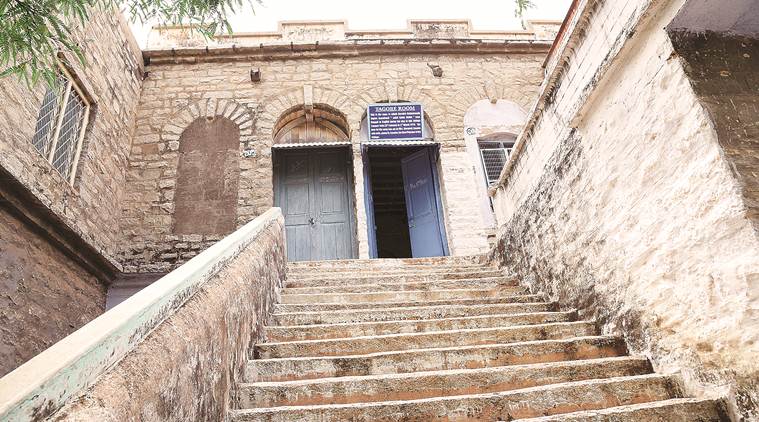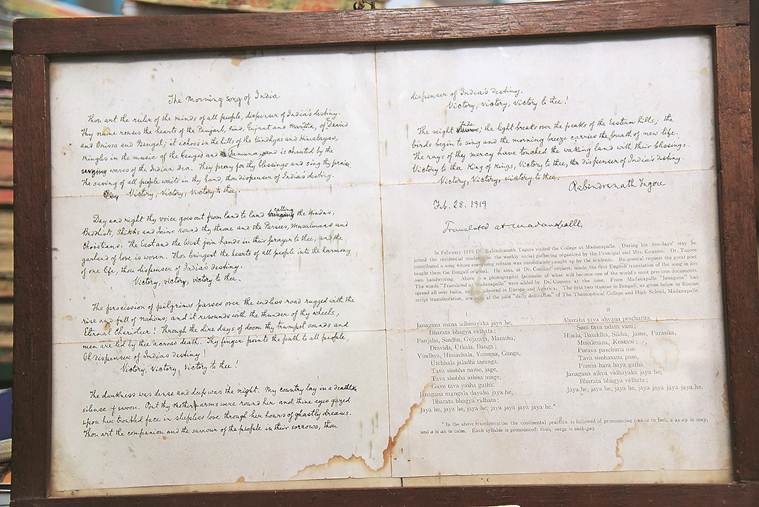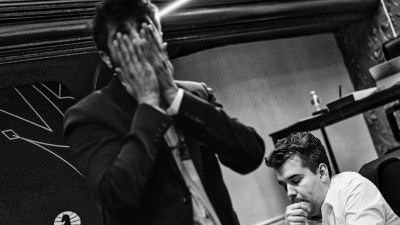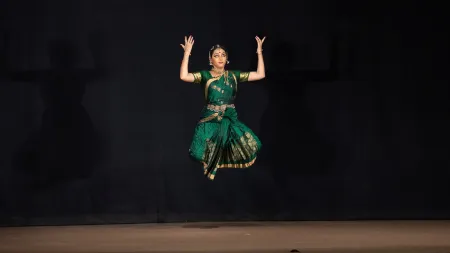- India
- International
How our National Anthem was composed and translated into English a century ago, on this day
Madanapalle is a town in Chitoor district, which was then a part of the Madras Presidency and is now in Andhra Pradesh. It is also the birthplace of the philosopher Jiddu Krishnamurthy. Horsley Hills, a quaint small hill station, is nearby as is the Rishi Valley School.
 The Room 204 at the Besant Theosophical College.
The Room 204 at the Besant Theosophical College.
(Written by Manoj Pande)
It all began in Room no 204. Its stone walls for the first time had heard the English rendering of our National Anthem, by its author Rabindranath Tagore. The Besant Theosophical College in Madanapalle, Andhra Pradesh, may not be in public memory currently, but its unique history is tied to India’s freedom movement.
Madanapalle is a town in Chitoor district, which was then a part of the Madras Presidency and is now in Andhra Pradesh. It is also the birthplace of the philosopher Jiddu Krishnamurthy. Horsley Hills, a quaint small hill station, is nearby as is the Rishi Valley School.
Theosophical College at Madanapalle was set up and formally opened by the then Governor of Madras, Lord Pentland on July 19, 1915, in the presence of Annie Besant. It was initially affiliated to the Madras University, but disaffiliated in June 1917 due to the involvement of Besant in the Home Rule Movement.
 A copy of Tagore’s English translation of the National Anthem.
A copy of Tagore’s English translation of the National Anthem.
Tagore was the Chancellor of the University, while James Henry Cousins, a poet himself, was the Principal.

Tagore was travelling across south India and chose to rest at Madanpalle from February 25 to March 2, 1919. He stayed at a cottage known as Olcot Bungalow (named after Colonel Henry Steel Olcot, one of the founders of the Theosophical Society), which was near the college.
Wednesday nights on the campus were song and fun sessions. Normally held in the living room of the Principal. On February 26, 1919, it was held in the art room of the college. After a few choruses, Tagore also offered to sing one of his songs.
In the words of Cousins: “In a voice surprisingly light for so large a man, he sang something like a piece of geography giving a list of countries, mountains and rivers; and in a second verse a list of the religions of India. The refrain to the first verse made us pick up our ears. We asked for it again, and before long we were singing it with gusto: “Jaya hai, jaya hai, jaya hai, jaya jaya jaya jaya hai”. (Victory, victory, victory to thee)” Dr Cousins further mentions: “Next day, Rabindranath gave the swara (notes) of Jana Gana to Mrs Cousins so that the melody could have an accurate permanent record.”
Margaret Cousins, a trained musician, put it to tune the next day. Tagore went over the song line by line in Bengali with its English equivalent. He also wrote out the translation of the song into English as the ‘Morning Song of India’ in his own handwriting on February 28, 1919. With the staff and students, Margaret rendered the song in the Besant Hall.
Today, there is no record of the event, except for a photocopy of the original translation in Tagore’s own handwriting in the college library. And all that remains is a plaque at the historical room no 204 where the song was rendered for the first time a century ago.
Manoj Pande is Director General (Personnel), Ministry of Railways
Apr 18: Latest News
- 01
- 02
- 03
- 04
- 05


































